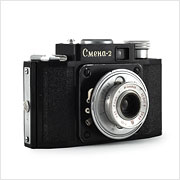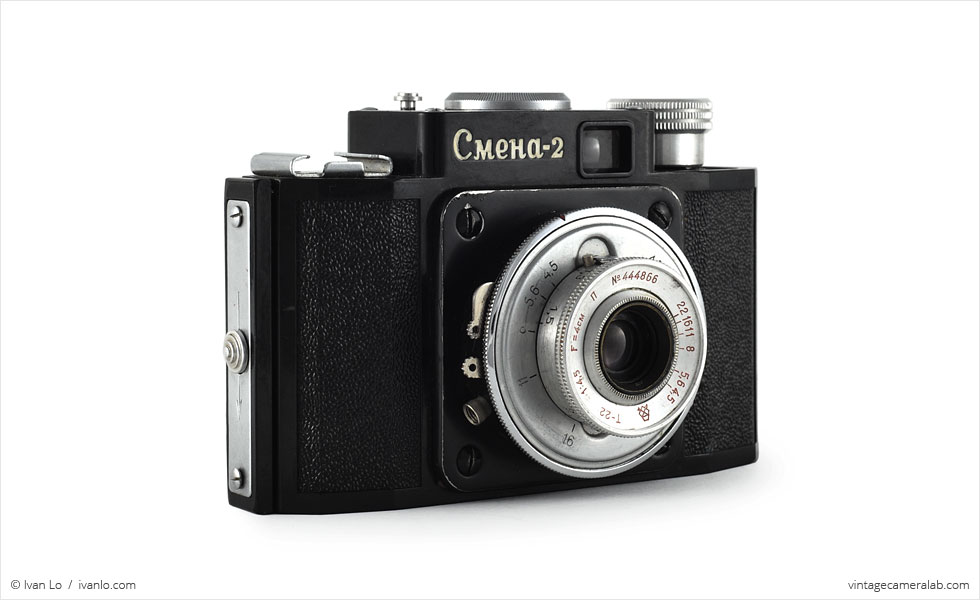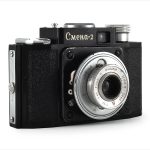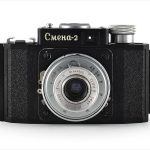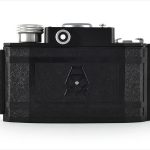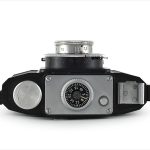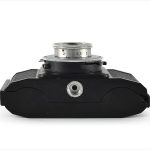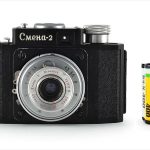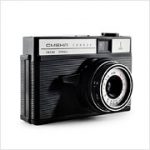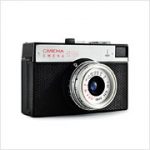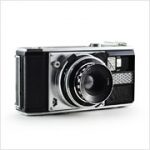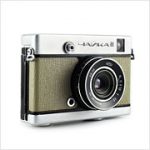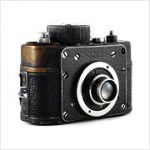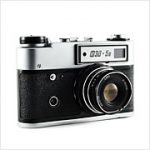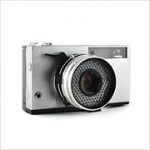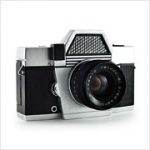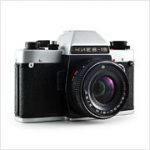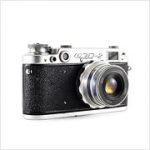GOMZ Smena-2 Specifications
| Manufacturer: | GOMZ |
| Origin: | Soviet Union |
| (modern day Russia) | |
| Made in: | Leningrad, USSR |
| (modern day | |
| Saint Petersburg, Russia) | |
| Introduced: | 1954 |
| Type: | Viewfinder |
| Format: | 135 Film |
| Dimensions: | 11.8 x 7.5 x 5.7 cm |
GOMZ Smena-2 Overview
The GOMZ Smena-2 is a plastic 35mm viewfinder camera introduced in 1954 by the Soviet State Optical-Mechanical Factory or GOMZ for short. Curiously, “smena” in Russian translates into “relay,” a fitting moniker since the 25 or so camera models that bear the Smena name were manufactured under three different brands from 1939 until the mid 1990s: MMZ (which eventually became BelOMO), GOMZ and, when GOMZ changed their name, LOMO. Smenas are made almost exclusively from plastic and were priced for mass consumption.
As mentioned before, MMZ also made a version of the Smena-2 so some examples of this camera have MMZ markings. This one, however, is made by GOMZ as evidenced by the “crossed arrow” logo on the back plate. Another place where the GOMZ logo shows up is on the front ring of the T-22 40mm f/4.5 lens opposite the coveted “Red П” which signifies that the glass is coated. Mated to the lens is a leaf shutter with speeds ranging from 1/10 to 1/200 seconds and Bulb. Firing the shutter is done by depressing the small metal button on the camera’s top plate and is reset by the cocking lever on the 10 o’clock mark on the lens barrel. The aperture can be set by rotating the ring immediately surrounding the front element and shutter speed is selected by moving the biggest and outermost ring. Other features on the lens barrel are a remote release cable at 8 o’clock, a flash sync socket at 4 o’clock, and a self-timer at 5 o’clock. Next to the shutter button on the polished metal top plate is a no-nonsense circular frame counter in surrounded by a cold shoe on the user’s right-hand side and a film advance knob on the left.
I bought this Smena-2 untested and as-is on eBay for dirt cheap. Unfortunately for me, the shutter is jammed which means it’s been in my “I need to try and fix this but will probably never get around to it” bin for a while now. As a bit of eye candy, though, the Smena-2 works just fine. I like the overall industrial look of the camera, especially the prominence of the GOMZ logo, the polished metal plate on top, and the gauge-like frame counter but what I really love is how the curly, almost handwritten script used for the “Smena-2” badge both softens it and kind of ties it all together.
Find your very own GOMZ Smena-2 on eBay.
McKeown, James M. and Joan C. McKeown’s Price Guide to Antique and Classic Cameras, 2001-2002. (Grantsburg, WI, USA: Centennial Photo Service, 2001), p 253.
